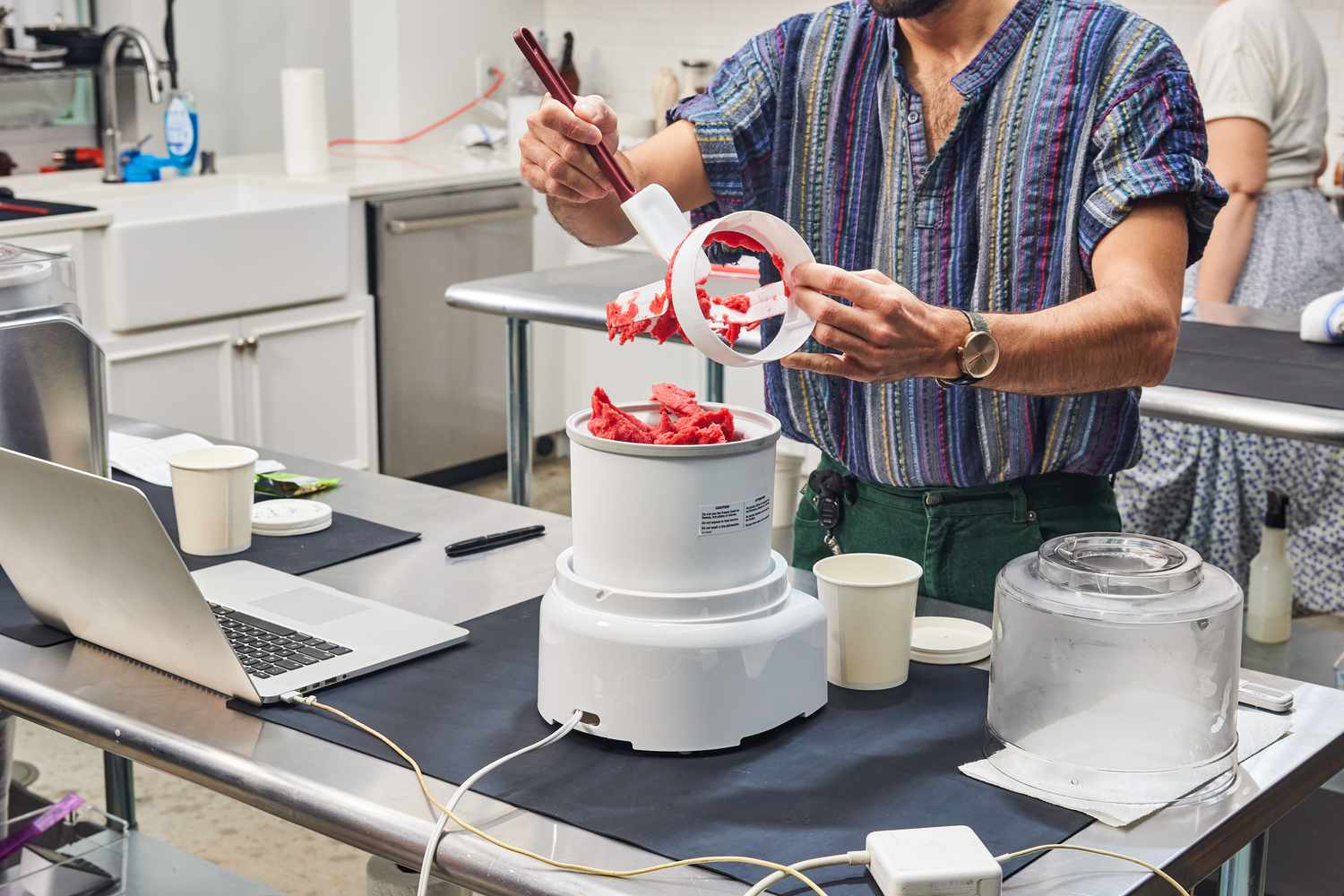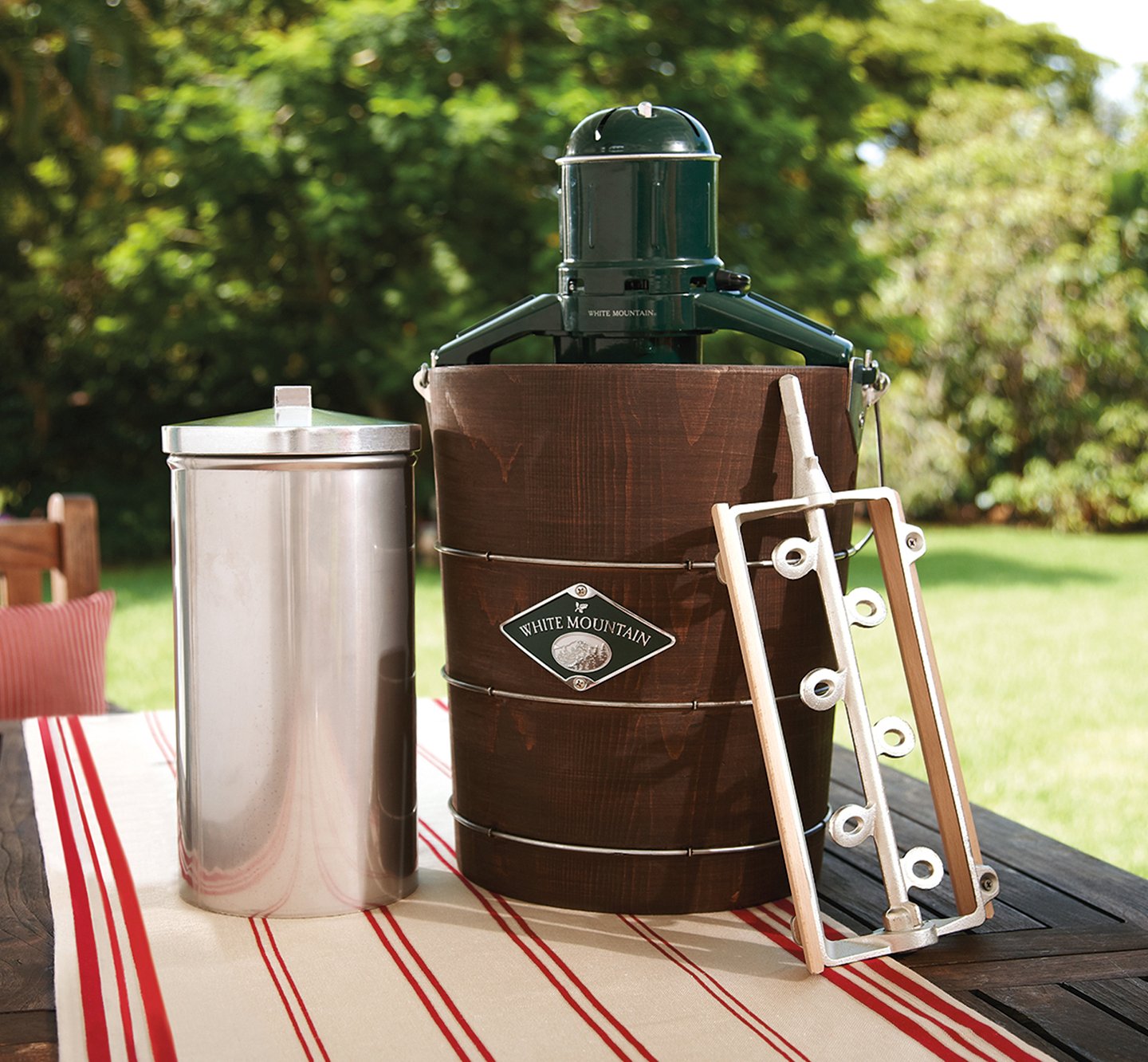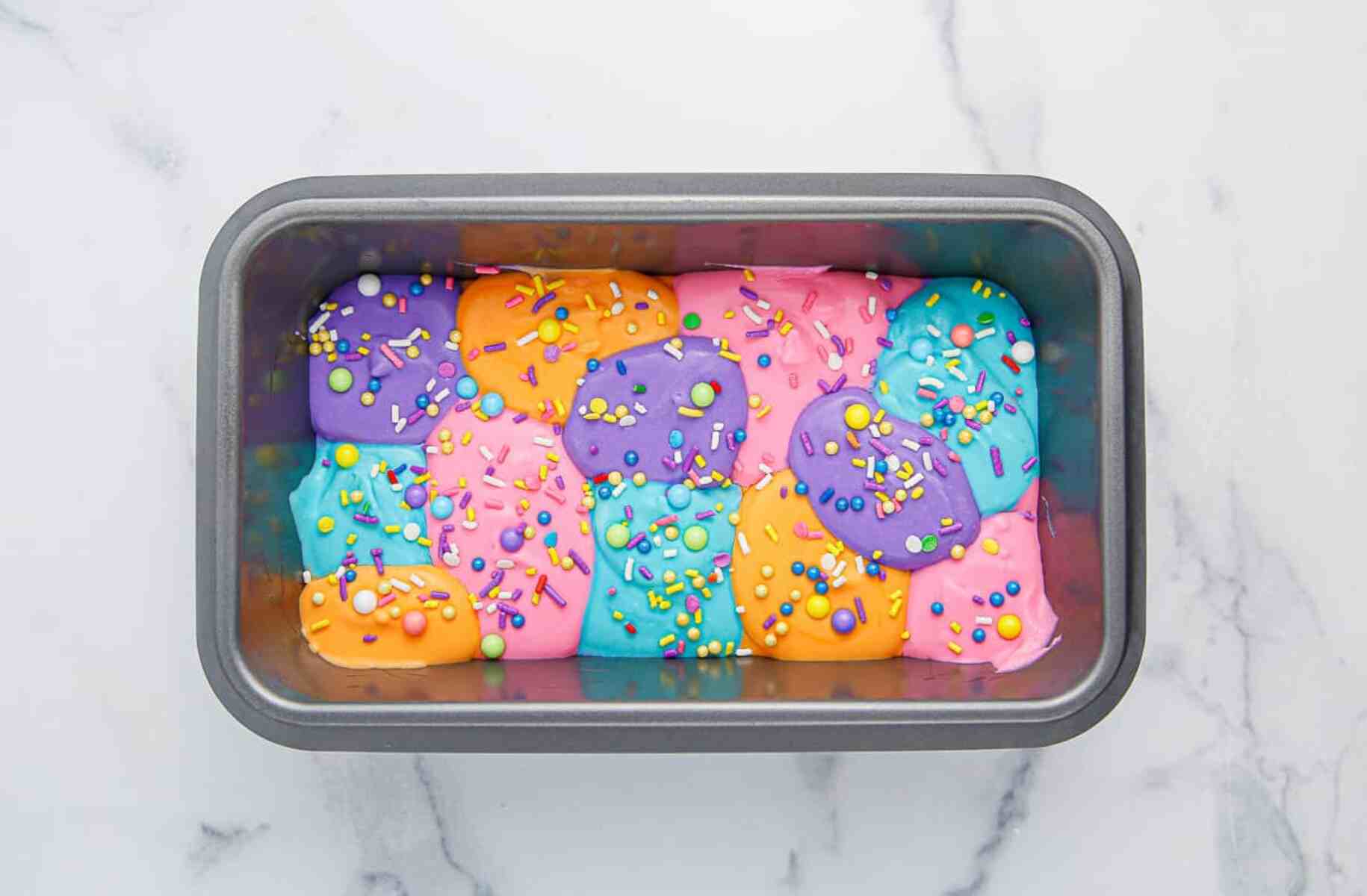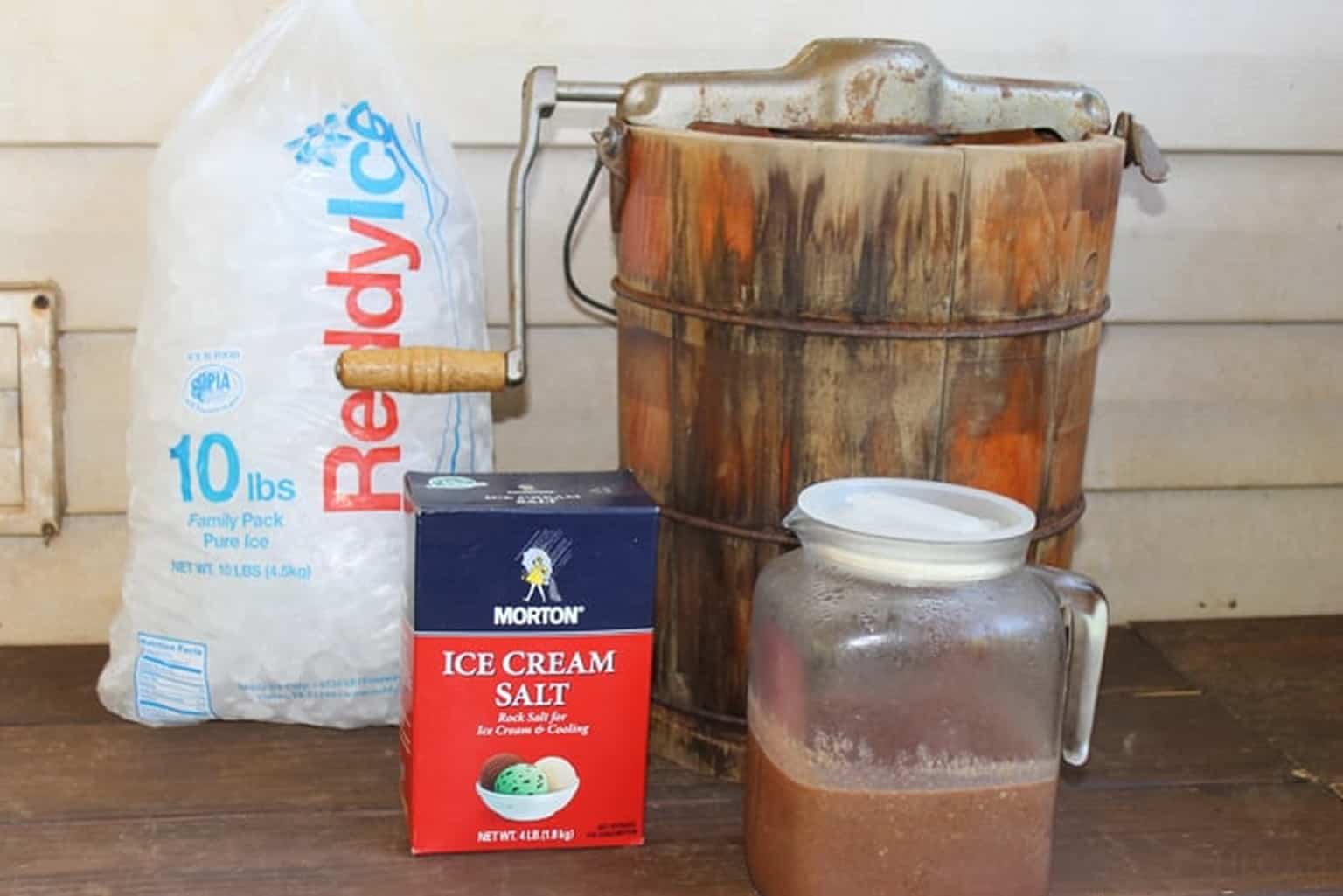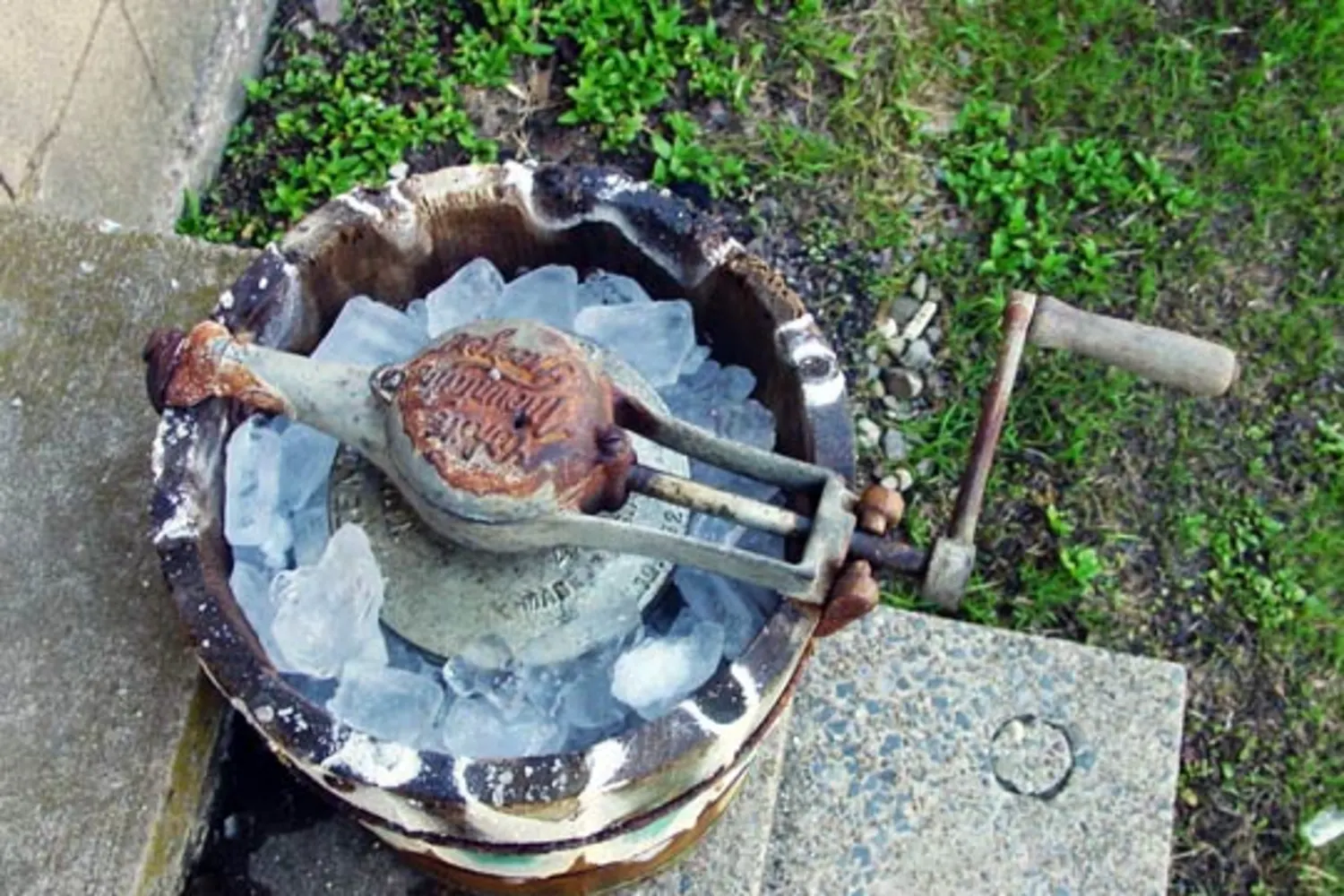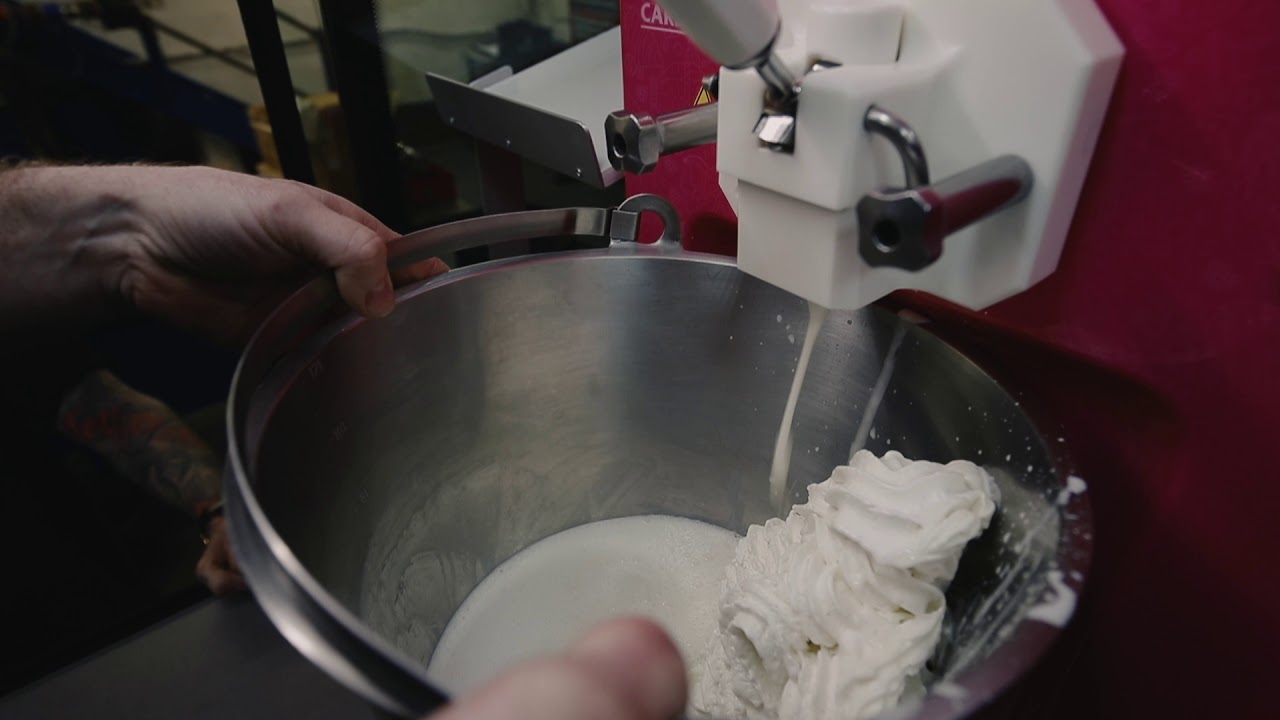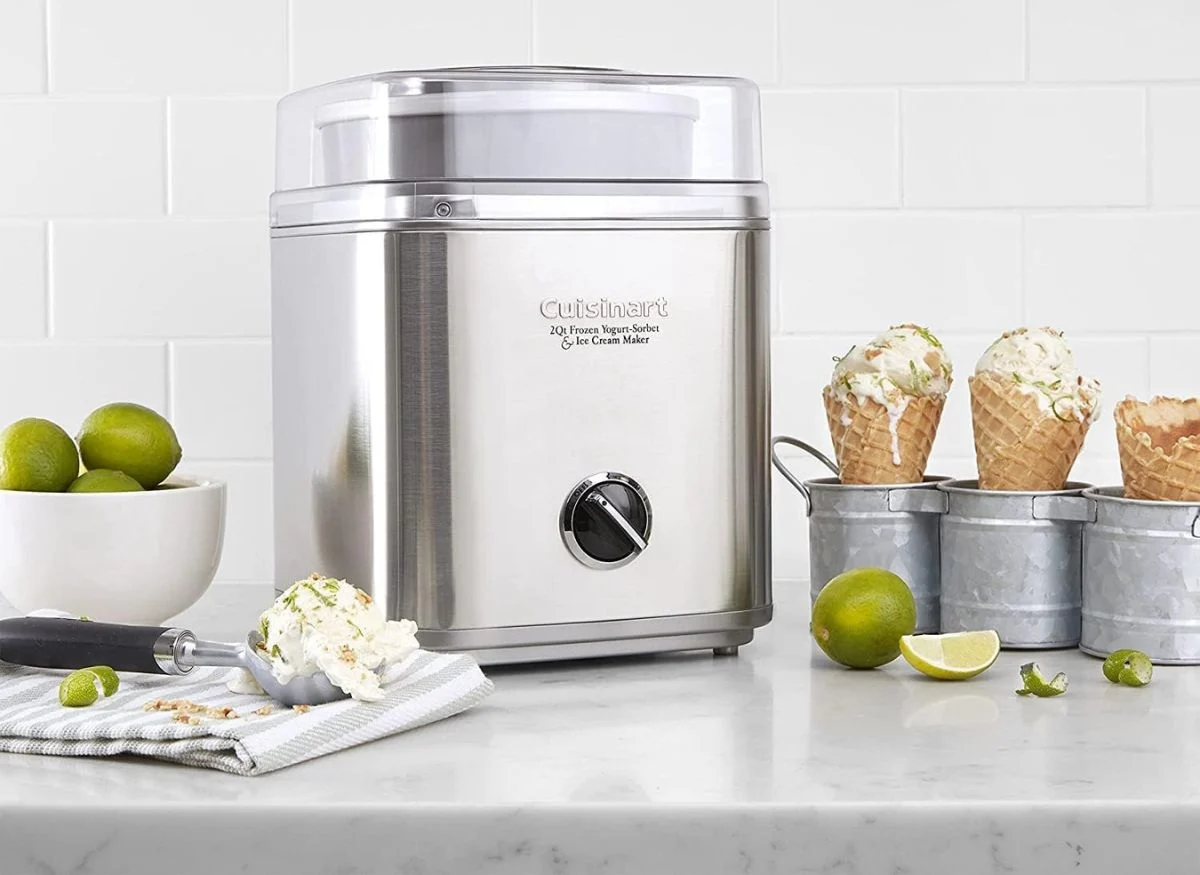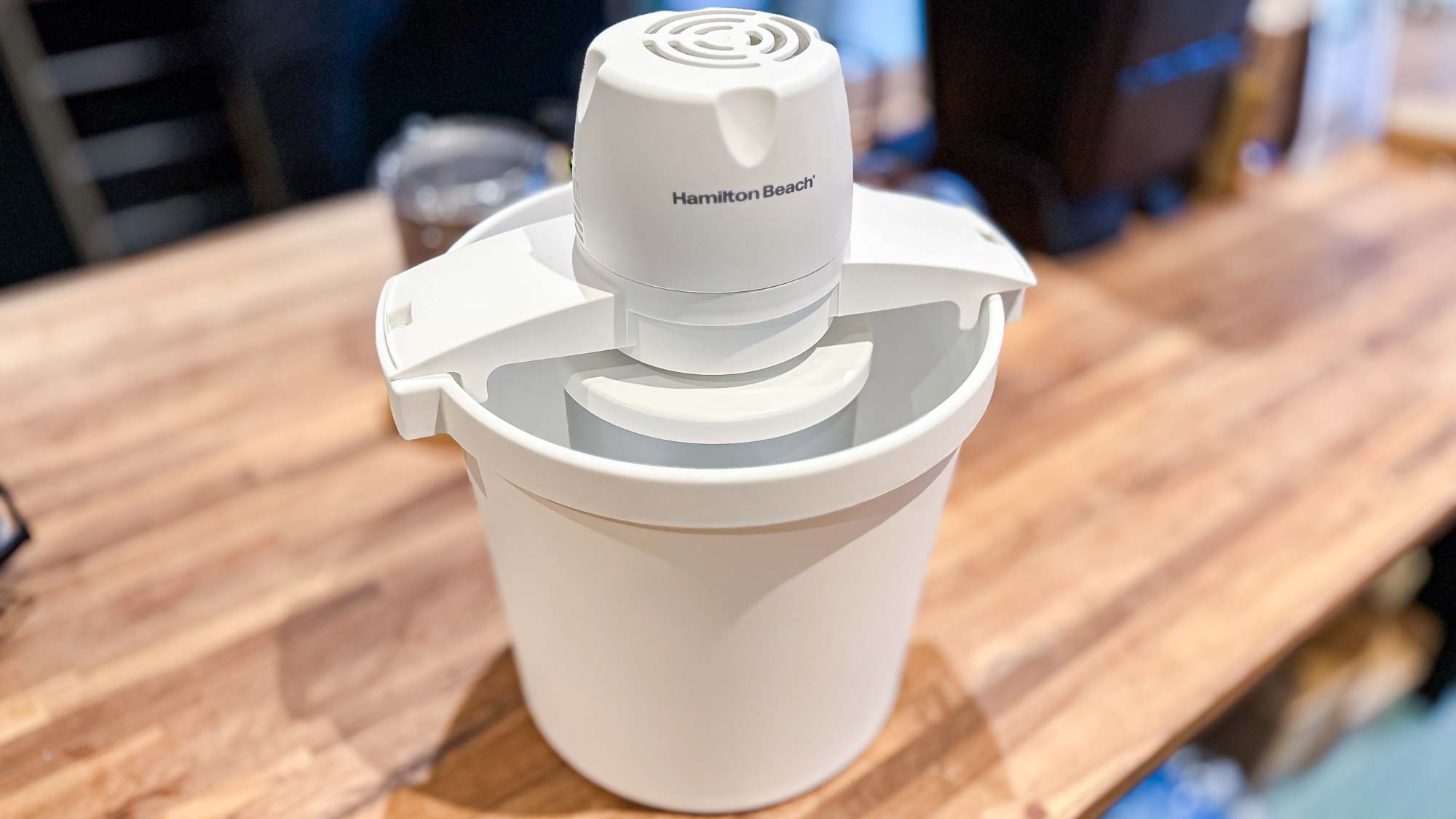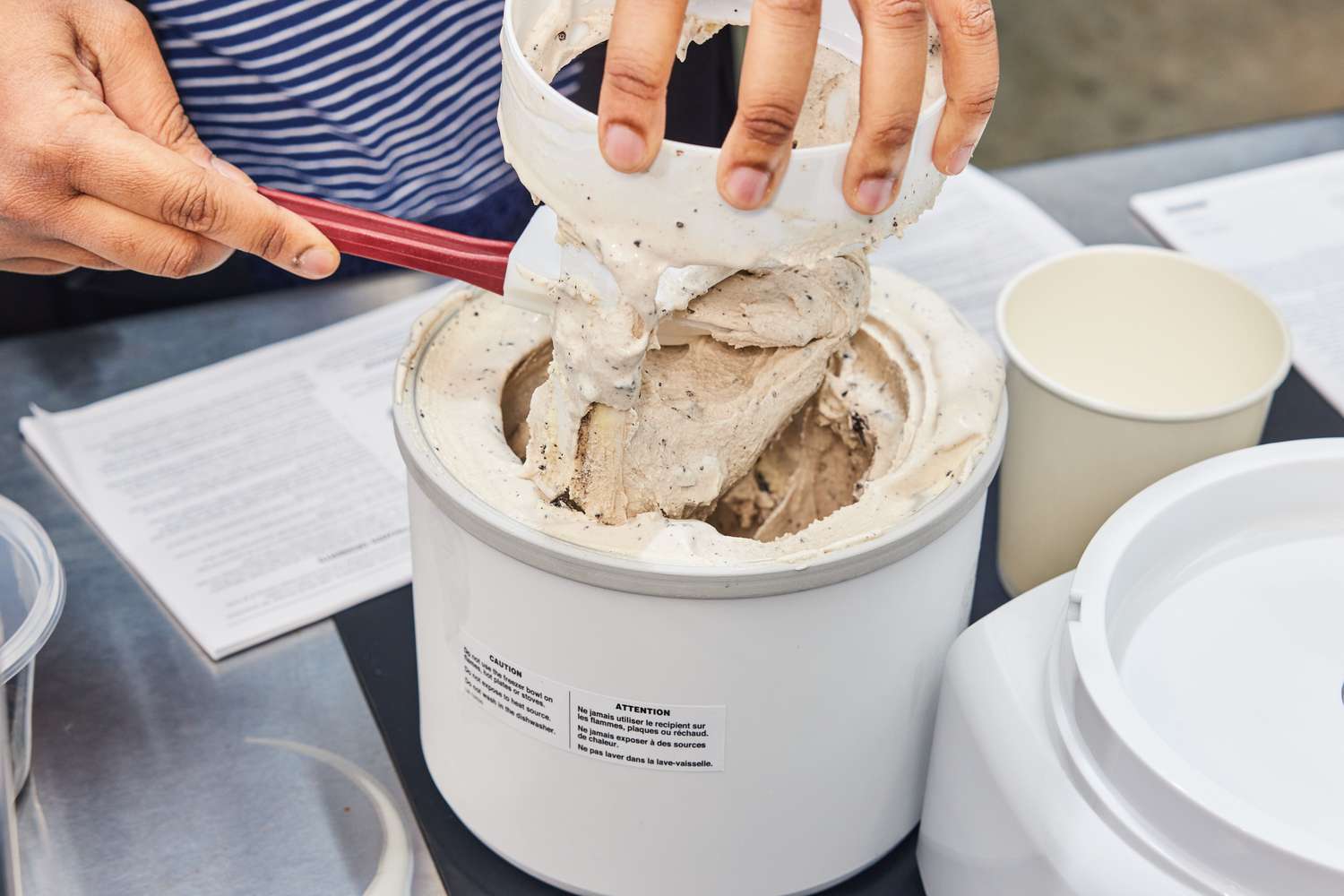The History of Ice Cream
Ice cream, a beloved frozen treat enjoyed by people worldwide, has a rich and fascinating history that spans centuries. Its origins can be traced back to ancient China, where the rulers of the Tang Dynasty (618-907 AD) enjoyed a dessert made from buffalo milk, flour, and camphor. This early form of ice cream was a symbol of wealth and power, as it required access to resources like ice and exotic ingredients.
However, it wasn’t until the 13th century that ice cream as we know it began to take shape. Marco Polo, the Venetian merchant explorer, is said to have brought the concept of ice cream back from his travels to China. The treat quickly became popular in Europe, where it underwent various transformations and adaptations.
In the 17th century, Italian and French confectioners refined the art of making ice cream, making it lighter and more flavorful. They introduced techniques such as using eggs and fruit flavors to create a smoother texture and delightful taste. Ice cream became a delicacy enjoyed by nobility and the upper class.
Fast forward to the 18th century, and ice cream had made its way to the American colonies. Ice cream-making was a labor-intensive process, with the main ingredient being a mixture of cream, sugar, and flavorings, which was then placed in a container surrounded by ice and salt to create the freezing effect. It was a luxury reserved for those who could afford the expensive ingredients and had access to ice.
With the advent of technological advancements, the 19th century saw significant developments in the ice cream industry. The invention of the ice cream maker revolutionized the production process, making it faster, more efficient, and accessible to a wider audience. This marked the beginning of a new era for ice cream, as it transitioned from being a rare treat to a staple dessert enjoyed by people from all walks of life.
The history of ice cream is a testament to the human desire for sweet indulgence. From its humble beginnings in ancient China to its modern-day popularity, this frozen delight has captured the hearts and taste buds of people worldwide. Its evolution continues to this day, with new flavors and innovative creations constantly emerging, keeping the tradition alive and delightful.
The Invention of the Ice Cream Maker
The invention of the ice cream maker in the 19th century was a turning point in the history of ice cream production. Prior to this revolutionary device, making ice cream was a laborious and time-consuming process. The ice cream maker transformed the way ice cream was made, making it more efficient, consistent, and accessible to a wider audience.
The first known patented ice cream maker was created by Nancy Johnson in 1846. Her hand-cranked device consisted of a wooden tub surrounded by a larger tub filled with ice and salt. The inner tub contained the creamy mixture that would eventually freeze into delicious ice cream. By turning the hand crank, the paddles within the tub rotated, creating a churning motion that incorporated air and prevented ice crystals from forming.
This simple yet ingenious invention accelerated the freezing process, reducing the time it took to make ice cream from hours to mere minutes. It allowed for a more consistent texture and a smoother, creamier end product. With the ice cream maker, homemade ice cream became more accessible to households, and people could enjoy this delightful treat without the need for extensive manual labor.
As the demand for ice cream increased, numerous improvements and variations of the ice cream maker emerged. Joseph-Antoine Ferdinand Carré, a French inventor, patented the first commercial ice cream machine in 1851. His device, known as a “créateur,” was capable of producing large quantities of ice cream at a time.
Over the years, technological advancements further refined the ice cream maker. Electrically powered machines, automatic churners, and more sophisticated freezing methods were introduced. These innovations not only made the production process more efficient but also allowed for greater experimentation with flavors and textures.
Today, ice cream makers come in various shapes and sizes, ranging from countertop machines to larger-scale industrial equipment. They incorporate advanced freezing mechanisms, precise temperature control, and programmable settings, ensuring consistent results and endless possibilities for ice cream creations.
The invention of the ice cream maker revolutionized the ice cream industry, making it easier, faster, and more accessible for both commercial producers and individuals. It opened up a world of creativity and innovation, enabling ice cream makers to experiment with different flavors, mix-ins, and techniques. The ice cream maker remains a crucial component in the production of this beloved frozen dessert, preserving the tradition while encouraging endless culinary exploration.
The Impact on the Ice Cream Industry
The invention of the ice cream maker in the 19th century had a profound impact on the ice cream industry, transforming it into a thriving and lucrative business. The accessibility, consistency, and efficiency brought about by this revolutionary device revolutionized the production process and sparked a surge in the popularity of ice cream amongst the general public.
Prior to the advent of the ice cream maker, ice cream production was a labor-intensive and costly endeavor. The manual stirring and freezing process required a significant amount of time and effort, limiting the quantity of ice cream that could be produced. The invention of the ice cream maker automated this process, enabling larger quantities to be made with less effort. This led to a significant increase in production capacity, making ice cream more readily available to the masses.
As the production process became more efficient, the cost of producing ice cream decreased. This reduction in production costs allowed ice cream to be sold at more affordable prices, making it accessible to a wider range of consumers. The availability of reasonably priced ice cream appealed to a larger market, leading to increased demand and subsequent growth of the industry.
The ice cream maker also played a crucial role in improving the consistency and quality of ice cream. The churning action introduced air into the mixture, creating a smoother texture and preventing the formation of ice crystals. This resulted in a more appealing sensory experience for consumers. The ability to consistently produce high-quality ice cream with the use of the ice cream maker contributed to customer satisfaction and loyalty.
The impact of the ice cream maker was not limited to the production process alone; it also influenced the diversification of ice cream flavors and varieties. With the increased production capacity, ice cream makers were able to experiment with a wide range of ingredients and flavors, offering consumers a greater selection to choose from. From classic flavors like vanilla and chocolate to more exotic options such as cookies and cream or salted caramel, the possibilities for ice cream flavors expanded exponentially.
The growth of the ice cream industry brought about by the ice cream maker also created new job opportunities. As demand increased, ice cream parlors and factories flourished, requiring additional staff for production, sales, and distribution. The industry became a significant contributor to the economy, generating employment and stimulating economic growth.
In summary, the invention of the ice cream maker revolutionized the ice cream industry in multiple ways. It increased production capacity, reduced costs, improved consistency, sparked innovation in flavors, and generated economic growth. The impact of this invention continues to be felt today, as the ice cream industry remains a thriving and ever-evolving sector of the food industry.
The Birth of Commercial Ice Cream Production
The invention of the ice cream maker in the 19th century paved the way for the birth of commercial ice cream production. Prior to this innovation, ice cream was primarily made in small quantities, often at home or in small local shops. However, with the advent of the ice cream maker, the production process became more efficient, and the stage was set for the mass production and distribution of ice cream.
The commercialization of ice cream production began in the mid-19th century, as entrepreneurs recognized the growing demand for this frozen treat. With the convenience and consistency offered by the ice cream maker, larger quantities of ice cream could be produced in a shorter amount of time, making it feasible to supply ice cream to a larger customer base.
One of the pioneers in commercial ice cream production was Jacob Fussell, an American businessman. In 1851, Fussell opened the first commercial ice cream factory in Baltimore, Maryland. Equipped with multiple ice cream makers and modern freezing techniques, Fussell was able to produce and distribute ice cream on a larger scale than ever before.
The establishment of commercial ice cream factories led to a significant increase in production capacity. Ice cream could now be manufactured in large quantities and stored for longer periods, allowing for widespread distribution to retailers and consumers alike. This marked a significant shift from the previous localized production and distribution methods.
Furthermore, the commercialization of ice cream production also brought about standardization in terms of quality and consistency. The use of ice cream makers allowed for more precise control over the freezing process, resulting in a consistent texture and taste. This consistency helped to establish trust and loyalty among customers, knowing that they would have the same enjoyable experience with each purchase.
The rise of commercial ice cream production also fueled the need for packaging and transportation infrastructure. As ice cream became more widely distributed, new methods of packaging were developed to ensure its preservation and maintain its quality during transit. Improved transportation systems facilitated the transportation of ice cream over longer distances, enabling regional and national distribution.
The birth of commercial ice cream production not only expanded the availability of ice cream but also created new opportunities for entrepreneurs and job seekers. Ice cream factories and parlors sprang up across the country, creating employment for workers involved in production, packaging, distribution, and sales.
In summary, the invention of the ice cream maker played a critical role in the birth of commercial ice cream production. Its efficiency, consistency, and scalability enabled entrepreneurs to meet the growing demand for ice cream and establish large-scale operations. The commercialization of ice cream production brought the joy of this frozen delight to a wider audience and catalyzed the growth of the ice cream industry as we know it today.
Ice Cream as a Symbol of Social Status
Throughout history, ice cream has often been associated with social status and luxury. In its early origins, ice cream was a delicacy enjoyed by royalty and the upper class due to its rare and costly ingredients, as well as the laborious process required to make it. As a result, ice cream became not only a delectable treat but also a symbol of wealth and social standing.
During the 17th and 18th centuries, the production and consumption of ice cream became increasingly popular among the elite in Europe. The ability to have access to ice and the means to indulge in such a luxurious dessert was a clear demonstration of one’s status and affluence. It was often served at grand banquets and royal feasts, where its presence added a touch of opulence and sophistication to the event.
Ice cream’s exclusivity and association with the elite continued into the 19th century. With the advent of the ice cream maker and the subsequent commercialization of its production, the middle class also had the opportunity to enjoy this once-aristocratic treat. However, despite its wider availability, ice cream continued to be regarded as a special indulgence, creating a sense of distinction and refinement among those who could afford it.
The social status associated with ice cream was not only rooted in its cost and accessibility, but also in its presentation. Elaborate ice cream molds, often made of silver or porcelain, were used to shape the frozen dessert into intricate designs. These decorative molds were reserved for the noble and wealthy, adding an extra layer of extravagance to the dessert and elevating its status even further.
Ice cream’s connection to social status was not limited to Europe. In the United States, during the late 19th and early 20th centuries, ice cream parlors emerged as gathering places for the upper and middle classes. These establishments provided an elegant and sophisticated setting for social interactions, where individuals could enjoy their ice cream while engaging in conversations and leisurely activities. The act of going to an ice cream parlor became a mark of refinement and a display of one’s social status.
Over time, as ice cream became more widely accessible and affordable, its association with social status began to shift. While it still retained some elements of luxury and indulgence, it also became a treat that transcended social boundaries, enjoyed by people from all walks of life. Today, ice cream is beloved by people of different backgrounds and serves as a universal symbol of delight and pleasure, regardless of social status.
In essence, ice cream’s historical association with social status highlights its transformative power in society. From an extravagant delicacy enjoyed by the elite to a beloved dessert for all, ice cream’s journey reflects the evolving nature of societal perceptions and accessibility, making it a treat that brings joy and delight to people from every stratum of society.
Ice Cream Parlors and Societal Interaction
Ice cream parlors hold a special place in the history of ice cream and have played a significant role in shaping societal interaction. These establishments have provided a unique and delightful setting for individuals to come together, enjoy ice cream, and engage in social interactions, fostering a sense of community and creating lasting memories.
In the 19th and early 20th centuries, ice cream parlors emerged as popular gathering places for people of all ages and social backgrounds. These establishments offered a respite from the hustle and bustle of daily life, providing a relaxed and comfortable environment where individuals could sit down, savor their ice cream, and connect with others.
Ice cream parlors became hubs of social interaction, fostering relationships and strengthening community ties. Families would frequent the parlor, creating cherished memories as they shared ice cream sundaes and bonded over conversations. Friends would gather to catch up, enjoying the sweet treats while engaging in lively discussions and laughter.
In these parlors, people from different walks of life would often come together, transcending social barriers. The love for ice cream created a sense of camaraderie, as individuals of various backgrounds interacted with one another, exchanging stories, experiences, and recommendations for their favorite flavors or toppings.
Furthermore, ice cream parlors also served as meeting places for young couples. These establishments provided a safe and pleasant environment for courtship, where couples could enjoy a sweet treat while getting to know each other and spending quality time together. The romantic ambiance of ice cream parlors added a touch of charm and nostalgia to the dating experience.
Ice cream parlors were not just about the ice cream itself but also the overall experience. The decor, music, and atmosphere within these establishments were carefully curated to create a sense of joy and relaxation. From the vintage charm of nostalgic parlors to the contemporary designs of modern ones, these spaces were designed to enhance the enjoyment of ice cream and promote social interaction.
Although the concept of ice cream parlors has evolved over time, they remain cherished spaces that continue to evoke nostalgia and create opportunities for societal interaction. Whether it’s a classic ice cream parlor, a modern gelateria, or a trendy ice cream shop, these establishments serve as communal gathering places where people can come together, indulge in their favorite frozen treats, and share in the pleasure of each other’s company.
The enduring popularity of ice cream parlors is a testament to their role in fostering social interaction and community engagement. These establishments have created countless memories, sparked friendships, and provided a sense of joy and togetherness. Today, ice cream parlors continue to be beloved destinations for people of all ages, serving as a reminder of the simple pleasures in life and the power of shared experiences.
The Evolution of Ice Cream Recipes
The world of ice cream recipes has undergone a remarkable evolution throughout history, reflecting changing tastes, cultural influences, and advancements in culinary techniques. From its humble beginnings as a simple mixture of milk, sugar, and flavorings, ice cream recipes have expanded to encompass a wide array of flavors, textures, and creative combinations.
In its early origins, ice cream recipes were relatively uncomplicated. Basic ingredients such as cream, sugar, and flavorings like vanilla or fruit were combined and then frozen manually with the help of ice and salt. These recipes formed the foundation of what we now consider classic flavors and set the stage for the future development of more elaborate variations.
As ice cream grew in popularity, new flavors and ingredients were introduced to satisfy evolving palates. Exotic spices, nuts, and fruits from different regions found their way into ice cream recipes, contributing to a broader range of flavors and a more diverse culinary experience.
The incorporation of technology, particularly the invention of the ice cream maker and other freezing techniques, marked a significant milestone in the evolution of ice cream recipes. These advancements allowed for the creation of smoother and creamier ice creams, leading to the development of more sophisticated recipes that required a higher level of technical skill.
The 20th century witnessed an explosion of creativity and experimentation in ice cream recipes. Artisan ice cream makers and chefs began pushing the boundaries of flavor combinations and textures, resulting in the emergence of gourmet and innovative ice cream creations. Unconventional ingredients such as bacon, matcha, or balsamic vinegar found their way into ice cream recipes, appealing to adventurous eaters and fueling the demand for unique and boundary-pushing flavors.
Furthermore, dietary considerations and changing consumer preferences have also influenced the evolution of ice cream recipes. The rise of lactose intolerance and dietary restrictions led to the development of non-dairy alternatives, such as soy milk, almond milk, or coconut milk ice creams. These recipes catered to individuals with specific dietary needs, broadening the reach and inclusivity of ice cream offerings.
Today, ice cream recipes continue to evolve and adapt to ever-changing food trends and consumer demands. Health-conscious options, low-sugar or sugar-free varieties, and vegan alternatives have become increasingly popular, reflecting a growing awareness of wellness and dietary preferences.
In addition to flavor innovation, techniques like liquid nitrogen freezing and molecular gastronomy have pushed the boundaries of ice cream recipes even further. These cutting-edge methods have allowed for the creation of unique textures, such as ultra-smooth or crunchy ice creams, adding an element of surprise and excitement to the dessert experience.
In summary, the evolution of ice cream recipes showcases the dynamic nature of culinary creativity and the diverse range of flavors and ingredients that have shaped this beloved frozen dessert. From traditional recipes to modern gastronomic advancements, ice cream continues to delight and surprise with its ever-expanding array of flavors, textures, and innovative combinations.
The Role of Ice Cream in Celebrations and Social Gatherings
Ice cream holds a special place in celebrations and social gatherings, adding a touch of joy and delight to these occasions. Whether it’s a birthday party, a family gathering, or a summer picnic, ice cream has become synonymous with celebrations and is often a centerpiece of these festive events.
One of the reasons ice cream is so closely associated with celebrations is its ability to bring people together and create a sense of shared enjoyment. It is a treat that appeals to individuals of all ages, making it a crowd-pleaser at parties and gatherings. The act of enjoying ice cream together fosters a sense of camaraderie, creating a shared experience and enhancing the overall festive atmosphere.
Ice cream’s versatility also makes it suitable for a wide range of celebrations. From traditional birthday cakes adorned with scoops of ice cream to ice cream sundaes with an array of toppings at an ice cream social, this frozen confection is adaptable to various event themes and preferences. It can be served in cones, cups, or as a complement to other desserts, making it a versatile treat that can be enjoyed in different ways.
Ice cream’s refreshing and cooling properties also make it a popular choice for summer gatherings and outdoor parties. Whether it’s a poolside barbecue or a beach picnic, ice cream provides a respite from the heat and adds a refreshing touch to the festivities. Its ability to melt and slowly be savored adds an element of relaxation and indulgence to these warm-weather gatherings.
Ice cream’s presence in celebratory events also extends to cultural and religious traditions. In many cultures, ice cream is a symbol of festivity and abundance. It is often served during holidays and special occasions to mark the joyous nature of the event. For example, in some cultures, ice cream is a staple at weddings, symbolizing blessings and good fortune for the newlyweds.
Additionally, ice cream’s alluring aesthetic qualities make it an ideal choice for dessert tables and displays at social gatherings. Creative and eye-catching ice cream presentations, such as elaborate sundaes or colorful ice cream cakes, add a visual appeal to the celebration, becoming both a treat for the taste buds and a feast for the eyes.
Moreover, the act of serving and enjoying ice cream at celebrations creates fond memories and nostalgia. It often evokes feelings of joy and the innocence of childhood, reminding individuals of past celebrations and happy moments. Ice cream’s presence in these social gatherings becomes intertwined with the emotions and memories associated with these events, further enhancing the celebratory atmosphere.
In summary, ice cream plays a vital role in celebrations and social gatherings. Its ability to bring people together, its versatility as a dessert option, and its association with joy and celebration make it a beloved treat for festive occasions. Whether it’s the symbol of abundance at cultural events or the refreshing delight on a hot summer day, ice cream adds an extra layer of sweetness and enjoyment to our most treasured celebrations.
The Ice Cream Maker’s Influence on Culinary Creativity
The invention of the ice cream maker has had a profound influence on culinary creativity, unleashing a world of possibilities for ice cream flavors, textures, and artistic presentations. This revolutionary device has challenged chefs and home cooks alike to push the boundaries of their imagination, ultimately leading to the emergence of innovative and unique ice cream creations.
Prior to the ice cream maker, the production of ice cream was a labor-intensive process that restricted experimentation. The manual churning and freezing methods limited the ability to incorporate different flavors and ingredients effectively. However, the mechanical consistency introduced by the ice cream maker transformed the production process, allowing for easier and more efficient experimentation.
The ice cream maker provided chefs and home cooks with a consistent texture and smoothness, creating a base for culinary creativity to thrive. With more control over the freezing process, different ingredients could be incorporated seamlessly, resulting in a wider range of flavors and mix-ins. From traditional ingredients like nuts, fruits, and chocolate to more unconventional choices such as herbs, spices, or even savory elements, the possibilities became endless.
The advent of the ice cream maker also encouraged the exploration of unique textures and presentations. Chefs experimented with adding crunchy elements like cookies or nuts, creating a pleasing contrast to the creamy base. They also played with freezing techniques, such as using liquid nitrogen, to achieve unusual textures like creamy popsicles or ethereal frozen mousses.
Furthermore, the ice cream maker sparked a wave of artistic presentation styles. Chefs and home cooks began using molds, shaping the ice cream into intricate patterns or novel forms. This added an aesthetic element to ice cream creations, making them visually appealing and enhancing the overall dining experience.
Culinary creativity with ice cream extended beyond flavor and texture experimentation; it also encouraged the combination of different desserts or the incorporation of ice cream into other culinary creations. Ice cream sandwiches, ice cream cakes, and ice cream-filled pastries became popular treats, showcasing the versatility of ice cream and its ability to complement other desserts.
Additionally, the ice cream maker’s influence extended beyond professional kitchens. Home cooks embraced this newfound creativity and began experimenting with their own unique ice cream recipes. The accessibility of ice cream makers for personal use allowed individuals to explore flavors and techniques in the comfort of their own homes, leading to a surge in homemade ice cream recipes and the growth of the DIY ice cream community.
The ice cream maker’s influence on culinary creativity goes beyond the realm of ice cream itself. The techniques, flavor combinations, and artistic presentations inspired by the ice cream maker have spilled over into other areas of gastronomy. Chefs and pastry artisans have incorporated ice cream-inspired elements into their dessert menus, such as infusing ice cream flavors into cakes, mousses, or sauces, creating a delightful fusion of traditional desserts and ice cream.
In summary, the ice cream maker has been a catalyst for culinary creativity, transforming ice cream into a canvas for innovative flavors, textures, and presentation styles. Its influence extends from professional kitchens to home cooks and has even permeated other areas of the culinary world. The ice cream maker has encouraged chefs and individuals alike to push boundaries, experiment with unique ingredients, and create memorable ice cream experiences that delight the senses.
Ice Cream and Childhood Memories
Ice cream holds a special place in the hearts of many, often evoking cherished childhood memories. The delightful taste, the colorful presentation, and the joyous experience of eating ice cream have a way of creating lasting impressions that stay with us throughout our lives.
For many, ice cream is synonymous with carefree summers and family vacations. It’s the memory of chasing after the ice cream truck, eagerly waiting for the bell to ring and the excitement of choosing a favorite flavor. The simple act of savoring a cone or cup of ice cream on a warm day can transport us back to the joy and innocence of childhood.
Ice cream is often associated with celebrations and milestones, creating memories that endure. Whether it’s blowing out candles on a birthday cake topped with melting scoops of ice cream or indulging in an ice cream sundae after a Little League game, these moments become etched in our minds as part of our personal histories.
Ice cream also forms an integral part of family traditions and rituals. It’s the anticipation of a weekly trip to the local ice cream parlor with parents or grandparents, building excitement as we pondered over the array of flavors and toppings. These traditions create a sense of continuity and connection, nurturing bonds that span generations.
Ice cream is often associated with fond memories of sharing and laughter. It’s the image of siblings sitting side-by-side, eagerly scooping from a container of ice cream, playfully arguing over who gets the last bite. It’s the feeling of pure joy and laughter during ice cream socials at school, where classmates gathered to enjoy this frozen treat together.
Moreover, childhood memories of ice cream extend beyond the act of eating it. Making homemade ice cream with family or friends, taking turns cranking the ice cream maker and eagerly awaiting the delicious results, creates a sense of camaraderie and teamwork. These shared experiences bond us and provide treasured memories that we carry with us into adulthood.
The nostalgia of childhood ice cream memories often influences our choices as adults. We find ourselves gravitating towards familiar flavors that remind us of those carefree days, seeking comfort and solace in the familiar taste of childhood. The mere sight or scent of ice cream can trigger a flood of memories, bringing a smile to our faces and warmth to our hearts.
Ice cream has the power to connect us to a time when happiness was simpler and life seemed more carefree. It reminds us of the simple pleasures of childhood, bringing back a sense of wonder, joy, and innocence. The memories created with ice cream play a significant role in shaping our identities and fostering a sense of nostalgia that we carry with us from one generation to the next.
In summary, ice cream and childhood memories are deeply intertwined. The taste, experiences, and emotions associated with ice cream create lasting impressions that stay with us throughout our lives. Ice cream holds a special place in our hearts, reminding us of carefree summers, family traditions, and the simple joys of childhood.
Conclusion
The history and impact of ice cream are far-reaching and captivating. From its ancient origins to the invention of the ice cream maker, ice cream has transcended social and cultural boundaries, becoming a beloved treat enjoyed by people of all ages and backgrounds. The ice cream maker, in particular, revolutionized the production process, making ice cream more accessible, consistent, and efficient.
Ice cream’s influence goes beyond its delicious taste. It has played a significant role in shaping societal interactions, fostering community, and creating lasting memories. Ice cream parlors have acted as gathering places, bringing people together to share in the joy and delight of this frozen treat. The evolution of ice cream recipes has sparked culinary creativity, resulting in innovative flavors and artistic presentations that continue to captivate and surprise.
Ice cream’s role in celebrations and social gatherings cannot be understated. It has become a symbol of joy and abundance, often associated with moments of merriment and togetherness. Ice cream’s presence in various cultural and religious traditions further reinforces its significance as a treat that brings people together, transcending boundaries and creating a sense of unity.
Childhood memories of ice cream are etched deeply in our hearts, evoking nostalgia, warmth, and a sense of innocence. Ice cream holds a special place in our lives, conjuring memories of carefree summers, family traditions, and moments of pure delight. It is a treat that has the ability to transport us back to a time when happiness was simpler and life felt more magical.
In conclusion, ice cream’s journey from ancient delicacy to modern-day delight has left an indelible mark on society and our collective experiences. Its rich history, the invention of the ice cream maker, its role in celebrations and social gatherings, culinary creativity, and childhood memories all contribute to the enduring love and admiration for this frozen confection. Ice cream’s power to evoke joy, create connections, and bring cherished memories to life is a testament to its timeless appeal and significance in our lives.







